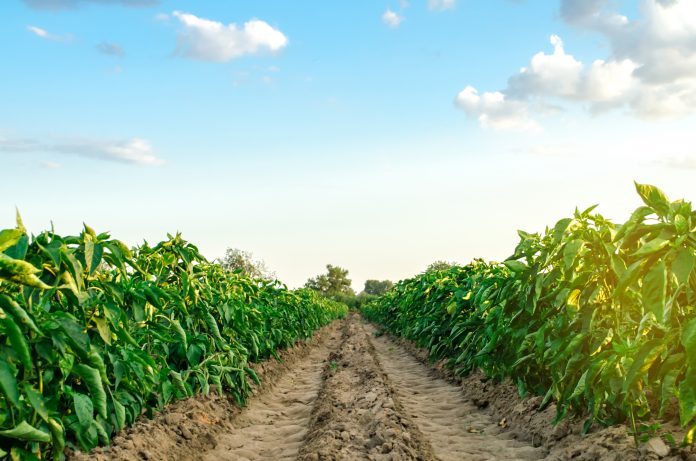Aarthi JanakiRaman, Research Director, Chemicals and Advanced Materials at TechVision, Frost & Sullivan, turns the spotlight onto continuous and real-time soil health management, which are critical for sustained agriculture practices
The rise in world population has placed an immense burden on our agricultural systems, as the demand for food production rises exponentially. This underlines the need for proper and efficient soil health management to ensure high productivity and crop yield. Ensuring soil health management is a collaborative approach.
There is a need for Integrated Nutrient Management (INM) that involves strengthening and maintaining soil health through careful use of soil inputs, constant monitoring for the optimum presence of not only micro-and macronutrients but also beneficial microbes and organic matter, testing methods for real-time monitoring to modify and recommend soil improvement measures, ensuring quality control requirements of biological and soil health promoters, such as bio- and organic fertilisers to name a select few.
Needless to say, the involvement of farmers is critical and educating them on various methods and principles of soil health and nutrition management will help not only improve soil health, but also help them to achieve better yields and more profits.
Soil health management involves the acceptance of the fact that soil is a living ecosystem by itself. It has varied physical, chemical, and biological properties that are interlinked and need to be synergistic in nature to enable the soil to function as a viable, healthy ecosystem with optimum nutrient, microbial and water availability and aeration. Soil management is also needed to mitigate climate change effects as the soil is a key medium that can aid in carbon sequestration and reduce greenhouse gas emissions.
While farmers will have an understanding of monitoring and improving soil health parameters, often the knowledge is restrictive and falls under corrective rather than preventive measures. Considering the importance of effective soil health management, there is a need for real-time monitoring and solutions to address concerns. This calls for judicious use of technologies, not restricted to physical inspection and help in continuous monitoring that goes beyond physical quality and fertility.
Technologies facilitating effective soil health management
Technologies play a crucial part in good soil health. Varied technologies beyond the use of fertilisers and growth inputs are deployed for continuous monitoring and implementing remedial measures.
The domain has seen an influx of companies from various technology areas with solutions that can address challenges and help farmers realise benefits. Apart from governmental agencies, non-profit institutes and Tier 1 agricultural companies, digital tracking and monitoring solution developers have technologies that not only track water availability, pH and other parameters, but also provide real-time inputs on microbial presence, nutrient availability and even suggest remedial measures are being successfully tested and ready for wide-scale implementation.
The agricultural industry has also seen the customisation of existing technologies for more effective monitoring and management. Improved versions of analytical technologies, such as portable Infrared (IR) Spectroscopy can help in real-time analysis of soil fertility, organic matter, pH and heavy metal content to name a few and design proper interventional measures. While real-time analysis is not a new concept, handheld analytical devices based on near- or mid-IR technologies can provide results that aid in starting immediate interventional measures that have been customised to track and monitor soil health from their traditional use in the F&B and pharma industries.
Apart from technologies that are available for enhancing soil health management, developments that can monitor the sustainability of agricultural operations are also being tested that aim to reduce greenhouse gas emissions and promote carbon sequestration.
The use of UAVs to provide for terrestrial monitoring, automated real-time testing of nutrient content integrated with predictive and prescriptive analytics provide insights on nutrient profiling, water infiltration, soil parameters. It can assess the environmental impact of the used crop inputs and practices can increase soil health effectively. Inclusion of nutrient profiling, soil health tracking and monitoring into ERP solutions intended for farm planning activities can provide farmers/growers with a one-stop comprehensive tool that can track, monitor and implement good agricultural practices, aid in farm management and also act as a platform between growers and buyers.
Apart from the use of sensors and digital tools, innovations are also focused on improving biological inputs that cause minimal adverse effects to the environment while improving the soil parameters. One of the emerging fields of study concern the use of genetic tools and DNA sequencing techniques to test for the microbiome and the microbial ecosystem of the soil. The use of these tools not only help in the use of apt biological inputs, but also in implementing practices to promote the growth of beneficial microbes.
What next?
The last few years have seen a global focus towards the generative agricultural ecosystem and emphasis on good soil health practices is on the rise as stakeholders realise that soil health improvement can overcome issues related not only to productivity and yield, but also related to nutrient depletion. It can also reduce greenhouse gas emissions, increase carbon sequestration and also support in increasing resilience towards droughts and other calamities.
Implementation of integrated soil health management practices, not only promotes a healthy soil ecosystem, but also sustainability in the agriculture industry and create additional revenue streams for farmers. Despite the continued collaborative focus of various stakeholders, technology development and adoption, the scale of deployment is still in nascent stages, making soil regeneration a continuing challenge.
Stakeholders need to increase the visibility of the importance of soil health management and agricultural regeneration practices to growers and farmers and provide continued support for implementing soil health management practices for sustained and improved agricultural practices.
Sustainable Agriculture Research and Education
The Sustainable Agriculture Research and Education (SARE) program is funded by the United States Department of Agriculture’s National Institute for Food and Agriculture. SARE, on their website, explains that they have financed no less than 7,666 competitively funded projects “to advance agricultural innovation that promotes profitability, stewardship of the land, air and water, and quality of life for farmers, ranchers and their communities”.
The vision of SARE concerns long-lasting and high- quality agriculture that is not only profitable but also protects the country’s water and land, as well as being a force for good when it comes to farmers and ranchers and their quality products plus operations that sustain their communities. The mission of the organisation includes pushing forward innovations that increase stewardship, profitability and quality of life by financing research and education that breaks ground. (1)
Finally, to illustrate one way how U.S. agriculture is advanced, we learn that sustainable weed management is vital to improve crop yield and increase both ranch and farm profitability, according to SARE’s book, Manage Weeds on Your Farm: A Guide to Ecological Strategies. “In my opinion, this book has the best information on weed management that is available today,” Klaas Martens of Lakeview Organic Grain of Penn Yan, N.Y comments. “Our understanding of weed control is still growing rapidly, and this book will certainly become an invaluable tool for every farmer who wants to control their weeds sustainably.” (2)
References
(1) https://www.sare.org/about/
(2) https://www.sare.org/news/manage-weeds-on-your-farm-an-ecological-approach/











